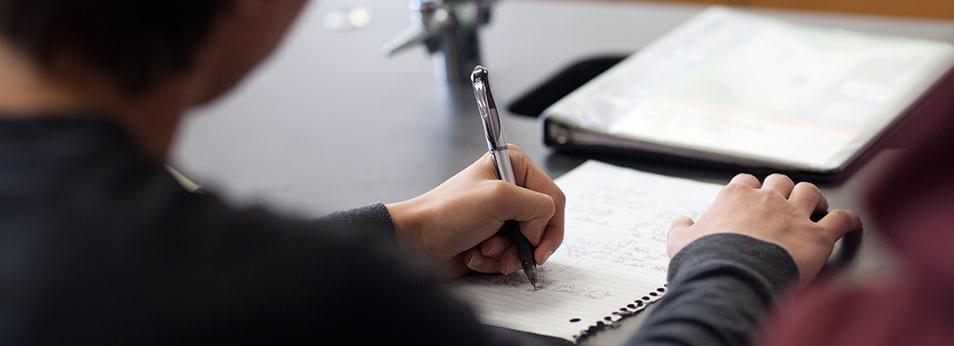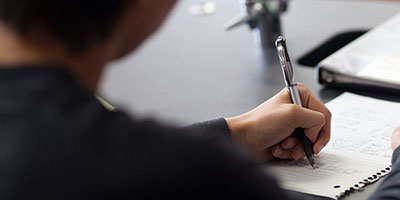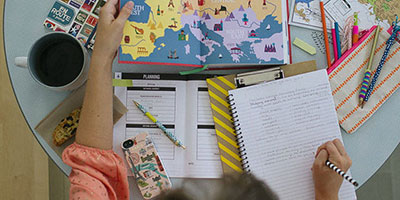Students
Reflection model
The basic process of reflection follows the ERA model – Experience, Reflection, Action. Most reflective models have a similar underlying structure. One expansion of this basic model is the 5Rs framework.
5Rs — Bain et al. (2002)
- Reporting of the context of the experience
- Responding to the experience (observations, feelings, thoughts, etc.)
- Relating the experience to knowledge and skills you already have
- Reasoning about the significant factors/theory to explain the experience
- Reconstructing your practice by planning future actions for a similar experience
Building a Reflection Mindset
Reflection’s greatest value comes when you build a reflective habit and mindset and align this with your own set of values, goals and objectives. Building a reflective habit or mindset typically combines at least three key elements:
- An ability and willingness to reflect on individual experiences to gain more learning from them.
- Repeating reflection over a series of related experiences, building the learning and value each time you go through the reflective cycle.
- Regularly reflecting over a longer timeframe to see patterns and opportunities for learning that we may have missed.
Doing this allows you to own and steer your progress, development, and impact in your studies or career, your communities and your personal life.
Self-Awareness Exercises
Strengths and weaknesses: Self-awareness of your strengths and weaknesses will help you accomplish tasks and overcome challenges. A couple of approaches for gaining better self-awareness are: Asking yourself targeted questions, Asking others.
Asking yourself targeted questions: direct questioning and indirect questioning
- Direct questioning
- What is one of my strengths/weaknesses?
- How do I know?
- What does it look like in practice? (For example, someone who is organized and conscientious may make lists, keep a calendar, always be on time, or never miss a deadline.)
- What other strengths/weaknesses may contribute to those behaviors? (For example, the behavior of ‘keeping a calendar’ may come from being organized and dedicated.)
- Indirect questioning
- What have others complimented me about? What strengths does that suggest?
- What have others had to help me with? Does that tell me anything about weaknesses I may have?
- What projects/tasks energize or enervate me? Does the type of activity help inform me about my strengths or weaknesses?
Asking others: Ask a friend, family member, or teacher to suggest what they think your strengths and weaknesses are. Whether you agree or not, reflect on what they say. It may will be useful to think about why they might experience you in that way.
Values: Your values are the things that are important to you, often taking on short labels such as: family, friendships, education, personal or professional development. By explicitly stating your values, you can assess whether you are spending time and making decisions in accordance with what you find important. One way to identify personal values are: Ask yourself questions.
- What is important to me?
- What would a perfect day look like? What values are represented in this choice?
- What do I spend my free time on?
- What do I enjoy doing?
Review the answers to your questions and consider what values they represent or capture, make a list, and prioritize it.
Goal setting (Using a reflective approach to set effective goals.): While goals are not reflective themselves, the process of choosing them, developing plans, and identifying challenges, and how to overcome them, certainly may be. There are many different goal-setting models, but some common themes you should consider are:
Deadline/Timing – make it realistic and appropriate
Importance – ensure that your goal is actually important to you
Specificity – make your goal specific
Realistic – make your goal realistic
Planning – build a robust plan to achieve your goal
Obstacles – identify and plan for these
Ways of Self-Reflecting
Writing a letter to your future self: This activity is about imagining where you are and who you are going to be sometime in the future. Five years is often used as the point in the future to envision as it is both far enough away that your life could be completely different, but close enough for it to seem tangible. The letter will focus on who you want to be and what you have accomplished between now and then.
- Identify a date in the future (for example five years)
- Write the letter to yourself to be received on that day in the future
- Write it as an actual letter
- In your letter address questions like the following:
- Who do I want to be?
- Where do I want to be?
- What do I want to have done?
- What of my hobbies have I developed?
- What friends do I still see and prioritize?
- What kind of new friends have I made? Where did I meet them?
- When you are happy with your letter, continue to the next step immediately or put it away for a couple of days and then return to it (recommended).
- Now reflect on your life as it is currently. Ask yourself questions like the following:
- Am I on track to be there in five years? (or whatever period you chose)
- What changes will I have to make right now to make this a reality?
- What are the first steps I can make today?
- How will my strengths and weaknesses help or hinder me getting there?
Conversation with self: Some find it easier to think reflections through in their own heads or while thinking aloud. To ensure that the experience transforms into reflection be conscious about when you want to do/are doing it and do it purposefully. Learn and generalize from it. You might want to formalize your private reflections by capturing them, so that you can revisit them or present them to others. Revisiting allows you to create more in-depth reflections by taking a bird’s-eye view on the situation. It can be valuable to record yourself and use the recording as a basis for a written reflection or for getting feedback from others. Some ways of reflecting in conversation with yourself include:
- Thinking by yourself/aloud
- Think purposely and consciously about something (e.g., an event, critical experience)
- Ensure you are aware of when you do it. You might realize while shopping that you were thinking about an event while walking there, but that won’t necessarily make the thinking you did on the way reflection.
- Some might find it helpful to talk aloud as this automatically makes it more conscious and purposeful
- Videos
- You might find that filming yourself while reflecting aloud might work well for you
- This can be done for personal use, or as a vlog.
- If it is done with the purpose of publishing it, be aware of the appropriateness of your reflection and the audience. Think carefully about what you put in it.
- Audio
- An easy way of capturing a reflection immediately after an experience happens.
- Allows you to revisit your thoughts later.
- Might be faster than writing it down and does not require pen and paper or computer, only your phone and a headset.
- It can be done while walking (you can wear a headset and people will likely think you are on the phone)
With others: Much of the reflection literature highlights the value of reflecting in conversation with other people. This can be in a formal relationship, with friends, or groups.
- Others may ask us the questions we cannot think of ourselves: Getting someone else to ask you questions might make you challenge yourself in a different way that you would never have thought of yourself.
- Others can help us with perspective taking: Reflecting with others gives you the opportunity to gain their perspective on a situation. They may know things you don’t and that can help you to gain a deeper understanding.
- Choose appropriate boundaries and be authentic within them: Common for all reflective conversations is that you should never share more than you feel comfortable with, and you should also be considerate of sharing information that the person you are reflecting with might not be comfortable knowing. It is important to remember that authenticity does not come from full disclosure, but from being genuine in the information we do share and staying true to ourselves and our boundaries.
Creative media: When doing personal reflection there are no restrictions to your process as long as it is reflective. Painting, drawing, and song writing can all be reflective as long as it supports you in the reflective process and. (Creative works, as a response to a reflection assignment, may additionally require accompanying words to explain the process and the thoughts behind it. Without these, it is likely your creative ability will be assessed and not your reflections.) Some types of creative reflection might include poems, songs, paintings/drawings, films.
It is still very important to remember that, just like conversations with friends, while these creative activities can be reflective, they aren’t automatically. It is only when a creative outlook helps make sense of experiences and thoughts, and challenges your taken-for-granted views, that it becomes reflection.
This page was adapted from University of Edinburgh Reflection Toolkit with permission.
Dr. Jennifer Van Reet
Director of the Center for Engaged Learning
Professor of Psychology
Library 211
401.865.1824
jvanreet@providence.edu
Dr. Darra Mulderry
Associate Director of the Center for Engaged Learning
Director, National and International Fellowships
Library 212
401.865.1745
Amy Goggin
Assistant Director of the Center for Engaged Learning
Library 212
401.865.1834
agoggin@providence.edu









